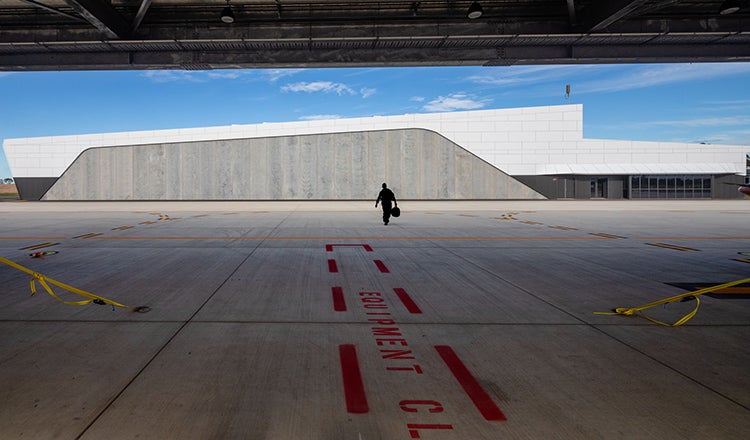
A Multilateral Approach: The Strategic Direction of Defence Infrastructure Design
Australia's Defence Strategic Review, and the pending Estate Review, have set the tone for ambitious reform to Defence’s capability, posture and preparedness. While there has been significant commentary to date, the implications and opportunities for Australia’s Defence infrastructure design workforce are less understood.
With productivity in international construction sectors traditionally a laggard, the shifting sands in national security and Defence infrastructure establishes an opportunity for challenging business as usual approaches and creates a new blueprint for the strategic direction of Defence infrastructure design over the coming decades — one that is data-driven, human-centred and underpinned by innovation and performance.
A Strategic Design Shift
Facilitating a design shift of this magnitude, however, requires a new approach and design ethos to be established in partnership with government, stakeholders and community. When reflecting on the strategic review, it’s evident that challenging business as usual thinking, digital disruption, speed of decision-making and delivery, and global collaboration as critical components that will supercharge this new direction.
At this critical juncture, there is a big job to be done in terms of educating ourselves, our colleagues and our collaborators on Australia’s Defence Enterprise priorities and reconfiguring our collective mindset so we can effectively design and deliver base redevelopments, capability facilities and operational and training environments. Not only do we need to find new ways to support faster procurement and development phase decision-making, but we need to adopt innovative new tools and methodologies that can rapidly iterate solutions in a climate that is largely underpinned by geopolitical tension, workforce evolution and threats to our regional security.
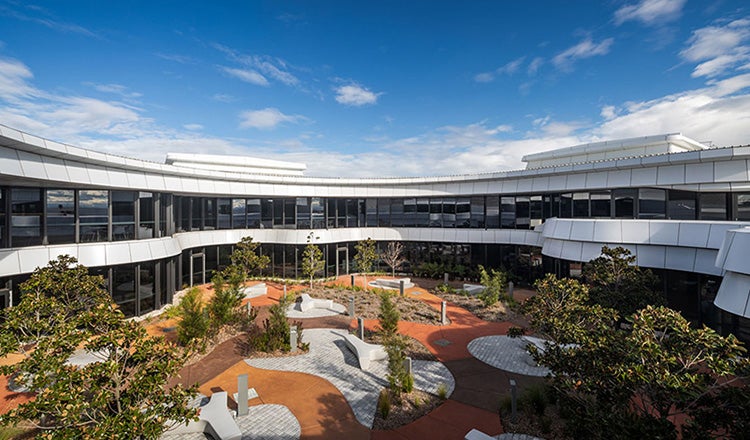
Challenging Business As Usual
Today, it’s increasingly understood that interrogating some of Defence’s long-established biases, reviewing fixed processes and critiquing procurement norms could result in more effective and efficient design outcomes moving forward. While the issue of procurement efficiency is nothing new for Defence, indecision during design development is proving to be, at times, equally problematic and costly.
Challenging business as usual thinking does not necessarily mean changing Commonwealth contracts, but instead involves encouraging a digital shift in the format of deliverables and promoting transparent, data-driven justifications that accelerate government infrastructure decision-making. This way, living collaboration can be fostered from the outset of a project.
Contractually, the format of design milestone reports can be agreed upon between the Commonwealth and the consultant, but what if we transformed conceptual and detailed design reports, which are often thousands of pages long, into architectural models and immersive design reviews whereby we’re visualising building stock in real-time using augmented and virtual reality? This way, we’re no longer visualising words on a page and instead acquiring immersive data capture to insert into the next iteration of an architectural model. It’s a win-win.
While there might be some short-term premiums in bringing in and developing some of these innovations, the long-term savings, enhanced quality and improved speed of delivery and decision-making would outweigh upfront costs and give the client time back to focus on additional priority areas. We are already seeing this digital change in the U.S. with the paperless construction of Columbia class submarines, so there’s no reason why we can’t be doing the same for our Defence infrastructure in Australia.
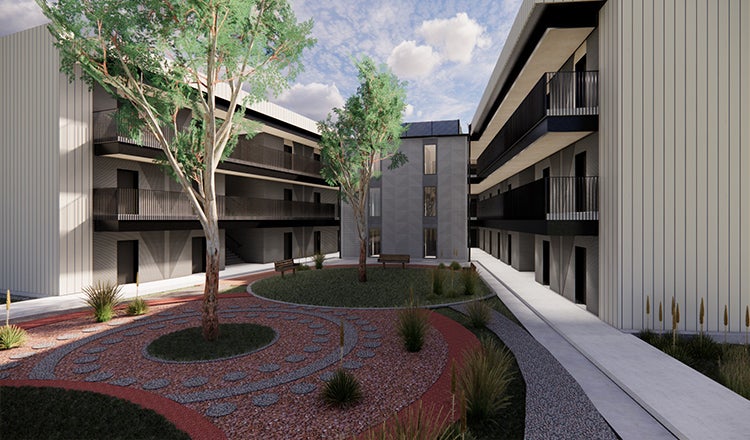
Digital Disruption
At this year’s Submarine Institute of Australia Conference, Defence Minister Richard Marles acknowledged the increasing importance of building a modern Australian Defence Force and transitioning to a high-tech society that can elevate Australia’s capacity to rapidly translate disruptive new technologies into ADF capability. These technologies may include artificial intelligence, quantum computing, cyber technology and hypersonics.
We know, however, that building an advanced high-tech economy and workforce is no easy feat. It’s the most challenging task and transformative endeavor we’ve ever undertaken as an industry, and it must be considered in lockstep with the weight of human capital. With so many stakeholders, facets and inputs to consider, mobilising an entire sector into a new way of thinking, and understanding the deeply technical design complexities this involves, warrants innovation on a scale that we’ve not witnessed before.
Much like the introduction of more efficient, data-driven procurement and design models, innovative methodologies such as design for manufacturing and assembly, or DfMA, are gathering pace. The Department of Foreign Affairs and Trade’s pending Overseas Construction Planning and Delivery Panel outlines the importance of these techniques for the work of the Commonwealth overseas and in remote Australian areas such as Northern Australia.
At HDR, for example, the manufacturing operation and efficiency of assembly is now being considered throughout the design process to enable rapid construction of high-quality modular buildings in remote locations. In Australia, factories in Western Sydney and regional Victoria have been established to reduce time spent on-site and enable modular construction of Defence facilities in controlled conditions. Not only will this enable greater workforce participation — because construction workers can work close to home regardless of project location — but work will no longer be impacted by the heat or rain. Excitingly, this will in turn promote better resource efficiencies, reduce embodied carbon and enable faster construction.
Today, there’s a clear interdependence between digital disruption, DfMA and challenging business as usual processes. This has been witnessed across projects including the $3.1 billion Garden Island Redevelopment, which I established before transitioning from the Department of Defence to HDR. For such a large value and long duration project, I was required to contractually empower change, create the mechanisms to support it and adapt to changing digital requirements. The success of this approach is highly transferrable for future infrastructure works associated with Australia’s new nuclear-powered submarines in Western Australia, the future new East Coast Base and at Australian Naval Infrastructure’s Osborne Shipyard in South Australia.
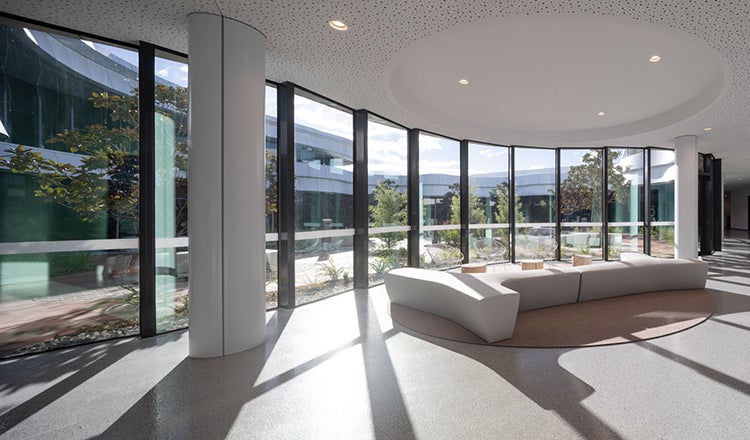
Design & Technical Leadership
In this transformative climate, designers also have an increased responsibility to operate at the cutting-edge of Defence design to deliver human-centred solutions that will build workforce attractiveness. Historically, however, there has been much industry debate on what makes a “good design” and preference to deliver a “minimum viable product” in alignment with Defence Estate priorities.
In a market of talent shortage, I believe that designing for staff amenity and well-being on the bases is now mission critical. It’s a balancing act between spending taxpayers’ money thoughtfully and ensuring that the Department of Defence has an attractive workplace with the right level of amenity so that people want to join, and stay in, the forces.
The Royal Commission has uncovered significant mental health challenges in the Defence sector and as the No. 1 healthcare design firm for 24 years we know that good infrastructure has a meaningful role to play in positive workplace relationships, good health and team morale. This means that we need to design buildings that are inherently community-driven, restorative and socially and ecologically sustainable, too.
To put it simply, “good design” is not about aesthetics but about optimising performance and creating more efficient buildings. For example, advances in materials means that designers can now deliver buildings that are higher performing and more suitable for local conditions, which in turn reduces operational costs over a building’s life cycle.
Successful examples include the HDR-designed Robertson Barracks Base Improvements project in Darwin where curvaceous awnings have reduced the heat load and future operational costs of the mess. Similarly, the $1.8 billion Riverina Redevelopment Program, designed by HDR in partnership with GroupGSA, has messes with inviting awnings that increase building performance while also reducing operational costs. HDR’s Regenerative Design Framework, which is supporting designers in moving beyond basic high-performance design goals towards net-positive impacts and metric-driven targets for carbon, water, nutrients, air, biodiversity, social and health categories, is further informing this approach.
Moving forward, design excellence will be critical to ensuring we are building an attractive workforce, and that the workforce we attract has sufficient technical skills to drive digital transformation and deliver resilient, high-performing infrastructure that envisions a regenerative future.
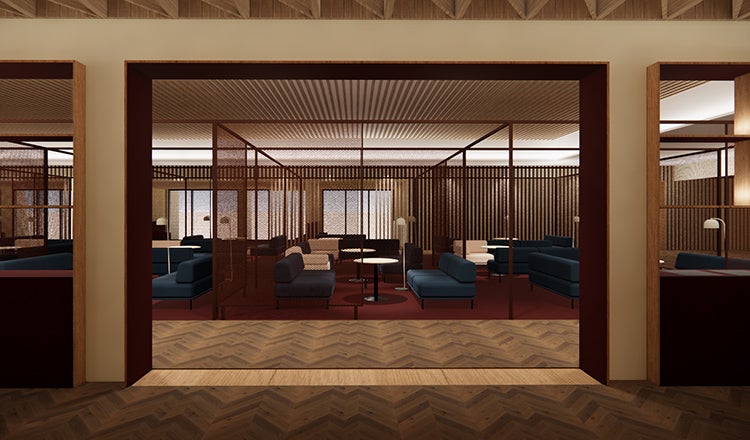
A Multilateral Approach
Ultimately, shifting the dial on Defence design at this scale will take a whole-of-sector effort that permeates into all facets of Defence operations. I believe that for industry transformation to be achieved at speed, a global approach to infrastructure design must first be instigated at a Commonwealth level and then make its way through to design and onward to the supply chains. If successful, this top-down, global effort has the potential to revolutionise the sector.
With diplomatic and defence partnerships deepening across the globe, Susana Erpestad, our global director of federal architecture at HDR, also believes that international collaboration across design studios and sectors is a critical part of facilitating this whole-of-sector shift. She thinks that by establishing a borderless approach that embeds technical subject matter experts with specialised expertise into projects, irrespective of geographical location or sector, we can expedite the delivery of highly technical, agile and resilient infrastructure for the AUKUS alliance.
RAAF Base Darwin Expanded Aircraft Parking Apron project is a strong demonstration of HDR’s global capability, whereby an aircraft parking apron and fueling hydrants for four KC-10 aircraft have been constructed. It was the first project to be constructed in conjunction with the ADF under the United States Force Posture Initiatives program, in which HDR engineers from Brisbane and Honolulu ensured project conformance to both U.S. criteria and Australian standards.
With a presence in over 200 global locations including Honolulu, South Korea, Singapore and Guam, we are continuing to facilitate international engagement with regional neighbours in the South and Asia Pacific to collaborate on strategic Defence programs and support these communities during a period of geopolitical instability. Armed with additional resources, new innovations and strategic global partnerships, we are well positioned to respond to priority areas at pace and play a key role in facilitating a strategic design shift that provides data-driven, human-centred solutions for the Department of Defence, both now and in the future.
As seen in the Asia Pacific Defence Reporter.
